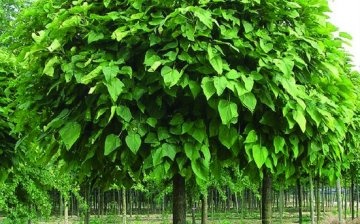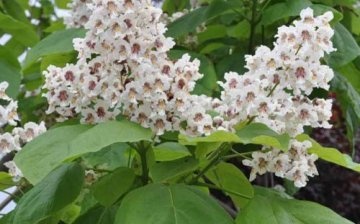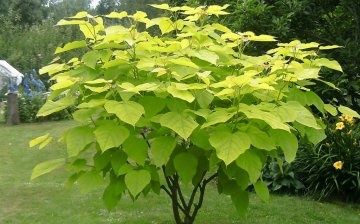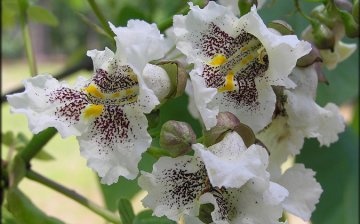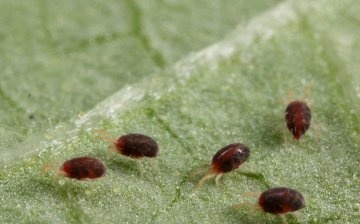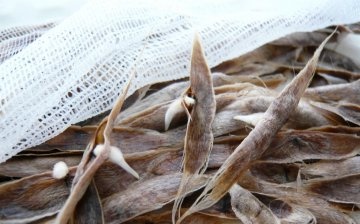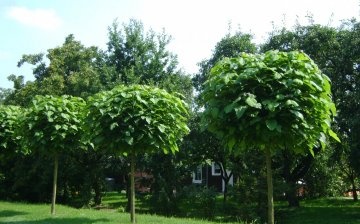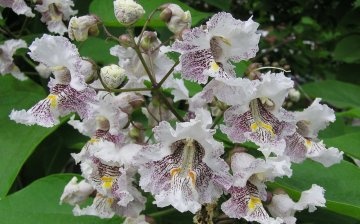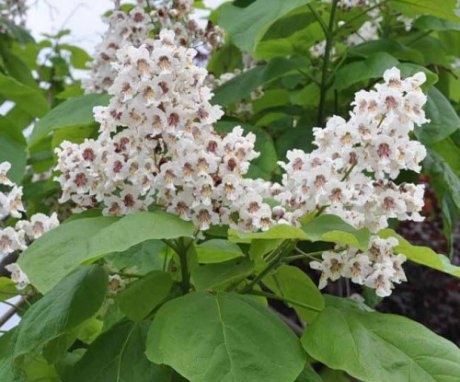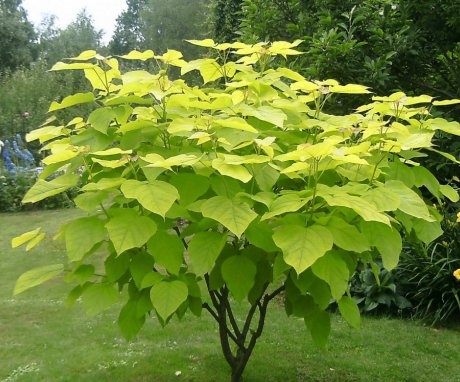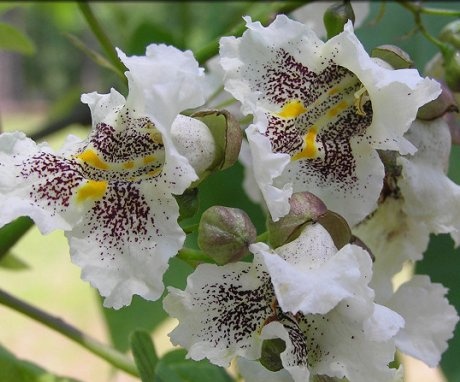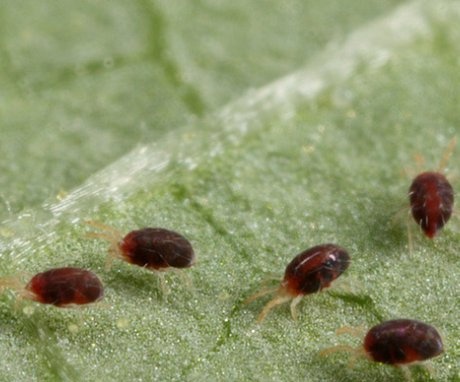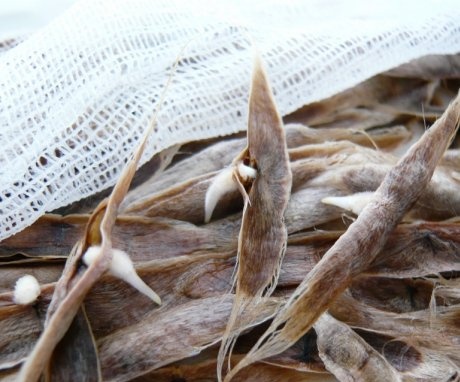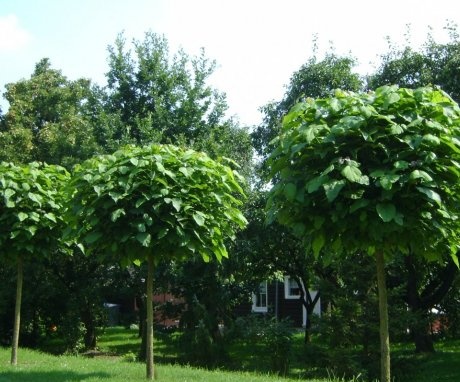Catalpa bignoniform: planting and caring for a tree
Catalpa bignonium was so officially named by Linnaeus in 1753. Before that, it was called Bignonia catalpa, this name was invented by the Muscogee Indians, since the leaves and pods of the tree, in their opinion, looked like "winged heads" - "kutuhlpa". The Indians believed that as many girls would be born in the tribe as there were flowers on the tree. Bignoniform catalpa trees were brought to England from North America at the beginning of the 18th century, and then from England they were brought to Russia a few years later.
Content:
- Description and varieties of catalpa bagnonia
- Planting a tree
- Care Tips
- Diseases and pests, how to deal with them
- Reproduction
- Application of catalpa
- Use in traditional medicine
Description and varieties of catalpa bagnonia
Catalpa bignonium grows along the banks of rivers in the southeast of North America. Catalpa can also be seen on the Black Sea coast. The tree in natural conditions grows up to 30 m, has spreading branches, a wide-round crown, light brown bark. When planted in the garden, the tree only grows up to 15 m.
It blooms for the first time 5 years after planting.
It blooms for a month, starting in mid-June. Each inflorescence contains up to 50 snow-white or creamy flowers with a scent similar to that of an apple tree. The flowers themselves are somewhat similar to bells foxgloves. Flowers may be covered with brownish-purple or crimson specks and yellowish stripes on the inside. The leaves do not turn yellow in autumn, but remain green almost until frost, and then they simply fall off.
The fruits are thin and long pods with seeds up to 40 cm long. They are on the tree almost all winter. When the pods open, the seeds fly away. The roots generally grow to a depth of 0.5-1 m.
Varieties of catalpa bignonium:
- Golden catalpa, it has velvety bright yellow leaves, in natural conditions its height reaches 10 m, but when planted in gardens it grows up to 2 m.
- Kene, has yellow leaves with a greenish spot in the center and bright green veins.
- Low "Nana" - these are dwarf trees, they are the most winter-hardy.
Planting a tree
Catalpa loves places that are well lit by the sun, but not blown by the winds, due to the fact that it has very delicate leaves that are damaged by the wind. It does not tolerate swampy soil and places with a close occurrence of groundwater. She prefers moist, well-drained, loamy soil with the addition of organic fertilizers.
Landing rules:
- For planting, make soil with 3 parts humus, 2 parts leafy soil and 1 part peat and 1 part sand. The soil should have an acidity close to neutral - ph7.
- Dig a hole 70-120 cm deep.
- Pour 5-8 kg of ash and 50 g of phosphoric flour into one hole. Pour 2 buckets of water into the pit.
- When planting between trees, observe an interval of 4-5 m.
- Place the seedling in the hole and sprinkle it with earth so that the root collar is at ground level, and the root ball is 10-20 cm above ground level, since then the earth settles and compresses.
- After planting, cover the trunk circle with peat with a layer of 5-7 cm.
Care Tips
In order for the catalpa to please with a beautiful and healthy flowering, it is necessary to properly care for it:
- Fertilizer. Make 2 dressings per season mullein... Add 10 parts water to 1 part manure and pour half a bucket under one adult tree (about 6 liters). Also feed with fertilizer once a season "Kemira wagon", pouring 120 g per m2. Water the trees abundantly before feeding.
- Watering... If the weather is hot and dry, pour 2 buckets of water under one tree once a week. If the weather is cool, water 2-3 times a month.
- Loosening the soil. Dig up the earth on the bayonet of the shovel, while getting rid of weeds.
- Pruning a tree. Branches often freeze near the tree in winter, so in spring, cut off those branches that are dry and damaged. The tree tolerates well pruning, after it branches begin to grow intensively.
- Preparing for winter. If the trees are young, tie them with spruce branches and cover them with fallen leaves. Wrap mature trees with two layers of burlap or lutrasil, and also cover the trunk circles with a layer of 15 cm with leaves.
Diseases and pests, how to deal with them
Catalpa is quite resistant to diseases and pests. But it can be damaged:
- Tiny scale larvae stick to branches, leaves, fruits, they do not move and form a flat shield measuring 2 to 4 mm, which protects them. Insects secrete honeydew, which resembles sticky syrup. The scale insects are carefully removed from the leaves with a cotton swab, then the leaves are carefully wiped with a cotton swab moistened with vodka. If the temperature is low, then spray the trees with a 2% oil emulsion. You can also treat the trees with actellik (2 ml / l), and repeat the treatment after a week.
- Spider mites are 0.3-0.4 mm in size. They are usually found on the underside of leaves and lay many eggs. Eggs can lie quietly on any objects for 2 years, then get on the leaf and then insects will hatch from them. Treating trees with 35% sulfaride paste (10 g / l of water) helps well against ticks. A solution is made and the whole tree is washed with a sponge or cotton swab. Then a week later, the treatment is repeated, this is done 3-5 times before the pest completely disappears. When using sulfaride paste, you must first apply the paste on 2-3 leaves, if after 2 days the plant does not have burns, then the tree can be completely processed.
- Thrips are insects, reaching 1.5-2 mm in length, they feed on sap, pollen and nectar. They fly from tree to tree and can carry viruses. To eliminate thrips, the tree is sprayed with an insecticide, after half a month, the treatment is repeated.
- Worms are purple-gray or brown insects and grow up to 5 mm in length. They leave a waxy discharge that resembles cotton balls. Best of all, they die when treated with a solution of karbofos (3-9 g / l of water), this is done 4 times, observing a weekly interval.
- Sometimes a Spanish fly can attack the catalpa. To eliminate the pest, the tree is sprayed twice with Kinmiks or Decis, Karbofos.
- If you find Comstock worms in unblown buds, then urgently treat them with insecticides.
If the ground does not allow water and air to pass through well, then the Verticillus fungus may appear, it leads to the death of the tree. Therefore, do not forget to loosen the ground.
Reproduction
Trees multiply seeds and cuttingscut in summer. Soak the seeds in warm water for 7-12 hours before sowing. Sow them in containers in February or March, first sprinkle them on the surface of the soil, then sprinkle them with earth a little on top, then cover with plastic wrap or glass.
Place the planting in a place with diffused sunlight and an air temperature of + 15-25 ° C. They are watered regularly, then in a month the first shoots will appear, and you can remove the film or glass.
Plant the seedling in open ground in May, when the weather stabilizes.
From mid-June, cut the cuttings 10 cm long. Plant them in a soil consisting of peat soil and sand. Water liberally. When shoots appear and roots grow, then transplant the tree into open ground. The rooting rate of cuttings without the use of stimulants is 50%.
Application of catalpa
This is the tree from the flowers of which bees collect honey. Oil is squeezed out of tree seeds, which dries very quickly in the light and becomes solid, there are isomers of eleostearic acid in the oil, it is used in the paint and varnish industry, is part of paints and varnishes.
The plant extract is added to serums, creams, gels, emulsions, which are then applied to inflamed and tired skin.
The tree is perfect for landscaping streets, gardens and summer cottages.
The trees have a light, light and soft wood that resists rotting well. Therefore, wood is used in shipbuilding, various products are cut out of it. Musicians appreciate the guitars carved from catalpa wood.
Use in traditional medicine
The bark of the tree contains resins and tannins, and the leaves contain monoterpene glycosides. The seeds contain 30% oil with eleostearic acid. The bark and pods are rich in catalpine and catalposide glycosides.
Features of use:
- In folk medicine, they drink decoctions from the bark of a tree to get rid of helminths, since the bark contains bitter glycosides. They also drink it for diarrhea, as it has an astringent effect.
- Decaying wounds and ulcers are washed with a decoction of the bark. The bark extract is used in the treatment of oncology, in diseases of the bronchi, since the bark contains the glycoside catalpin.
- The leaves of the tree contain phytoncides and they are used in the treatment of strumas, carbuncles, abscesses, scabs, and the eyes are washed with a decoction of the leaves when the cornea becomes clouded.
- An infusion of tree pods is used to wash the skin for acne, herpes, and furunculosis. Compresses are made from the infusion and used for hemorrhoids and prostatitis.
The tree grows very quickly, it can grow 1 m per year. Catalpa is unpretentious, resistant to different weather conditions, diseases and pests... Catalpa looks great both alone and in group plantings. It goes well with maple, paulownia, oak, magnolias.
More information can be found in the video:



